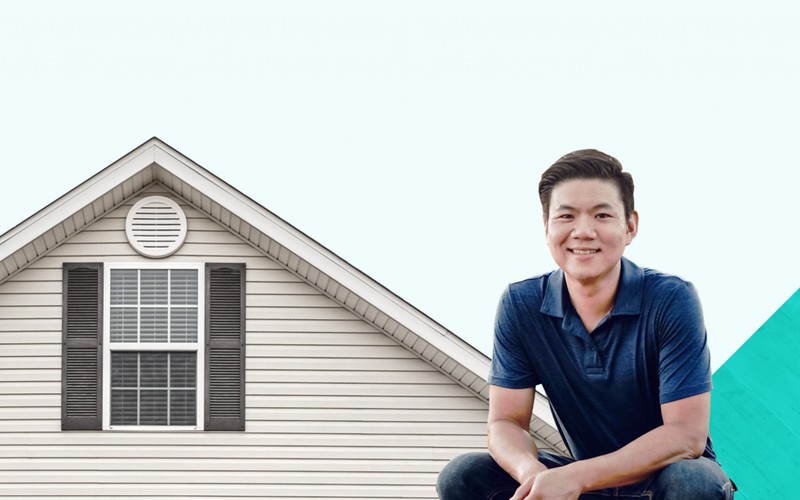You’ve heard it before: If you want to save money, buy used.
But does that rule apply in real estate?
The answer? It depends. When you invest in real estate, sticking to conventional wisdom doesn’t always work. Before opting for new homes or existing inventory, you should consider other factors — like current market conditions, consumer sentiment, and risk level- to determine what to invest in.
We sat down with our resident expert investment team at Arrived, Cameron Wu, Vice President of Investments, and Jeff Talbert, Director of Investment Valuations, to discuss investing in new construction versus the resale market and gain some insight into the unique market we’re in right now.
Consider nationwide market trends
Market trends are one of the first things to consider when investing in single-family residential properties. What is going on in the economy nationwide?
Looking at trends between the Great Recession and the pandemic, we see distinct shifts.
Before the Great Recession, the nation was facing a housing bubble. Demand for homes increased, builders scrambled to add to the inventory, and speculators invested heavily in the market, furthering demand. And then, the market crashed. People started to lose their jobs and put their existing homes up for sale. With an influx of existing inventory, home prices began to trend downward.
“There was so much resale inventory during the Great Recession that builders were put out of business,” says Cameron Wu, vice president of investments at Arrived.
In that case, buying an existing investment home was often the best way to score a deal at the closing table. But if we compare the Great Recession with the pandemic, we find the opposite is true.
At the start of the pandemic, supply chain shortages and lockdowns often put new housing development on hold right at a time when many people were relocating to new areas and looking for a home to buy. So, they purchased existing inventory rather than wait on new construction.
As the pandemic progressed, economic factors started pushing up interest rates. Now, everyone in those existing homes started delaying selling plans, hampering the resale market. With fewer existing homes on the market, prices went up.
Homebuyers responded to the lack of supply in many locations by upping their offer. “It is a weird dynamic where people are acting illogically just because there are so few resale homes,” says Jeff Talbert, director of investment valuations at Arrived.
To put it another way, “Costs are all predicated on the volume of resale inventory, and today we’re just seeing the opposite effect compared to the Great Recession,” says Wu.
Drill down to location
While we may be in a market that favors existing homes, it doesn’t mean you’ll automatically get a better deal on new construction.
First, you have to consider location. Resale markets are often more competitive in urban areas with limited space to build new. As you get farther out, that holds less weight.
“You can have a situation where you have a materially higher resale market for premium locations. But that’s not going to be true on the outskirts where you’re competing in an area where everyone wants new homes,” says Wu.
You also have to consider the builder. Builders often offer incentives on new homes, especially if they’re breaking ground on larger developments that need to sell quickly. But market conditions can play a factor in what those incentives are.
Since the pandemic, the Arrived Investment Team has found builders aren’t always reacting quickly to the rise in housing prices.
“They’re not raising their prices every month. They’re still offering incentives on new homes because they have to churn through all that backlog they started putting in the ground in 2020 and 2021,” says Talbert.
But that could change as existing inventory catches up to demand.
Factor in appreciation potential
Another factor to consider: How much can you expect to make off your investment?
Generally speaking, it is easier to see the potential for appreciation in developing areas where the initial cost of buying an investment property is lower than in developed cities where prices are already at the top of the market.
“If you have a home that’s new at $280,000. It is easier for that to go up to $350,000 or even $400,000 than buying a home in a hot market at $1 million and hoping it goes up by an equivalent 20%,” says Wu.
However, it helps to remember that real estate — like any investment — isn’t a guarantee. While Arrived uses nationwide data to monitor housing market trends, simply buying cheap in a developing area won’t necessarily guarantee you’ll see property values shoot up. But factoring in economic trends, getting to know the builder, and researching the local market can help narrow your choices.
Real estate is a complex market. When making investment decisions, investors should pay close attention to supply and demand dynamics, interest rates, and market trends. Staying updated and cautious is essential. Arrived does the heavy lifting to find the best markets so their investors can focus on building long-term wealth, one investment at a time.
The opinions expressed in this article are for general informational purposes only and are not intended to provide specific advice or recommendations for any individual or on any specific security or investment product. The views reflected in the commentary are subject to change at any time without notice. View Arrived’s disclaimers.







